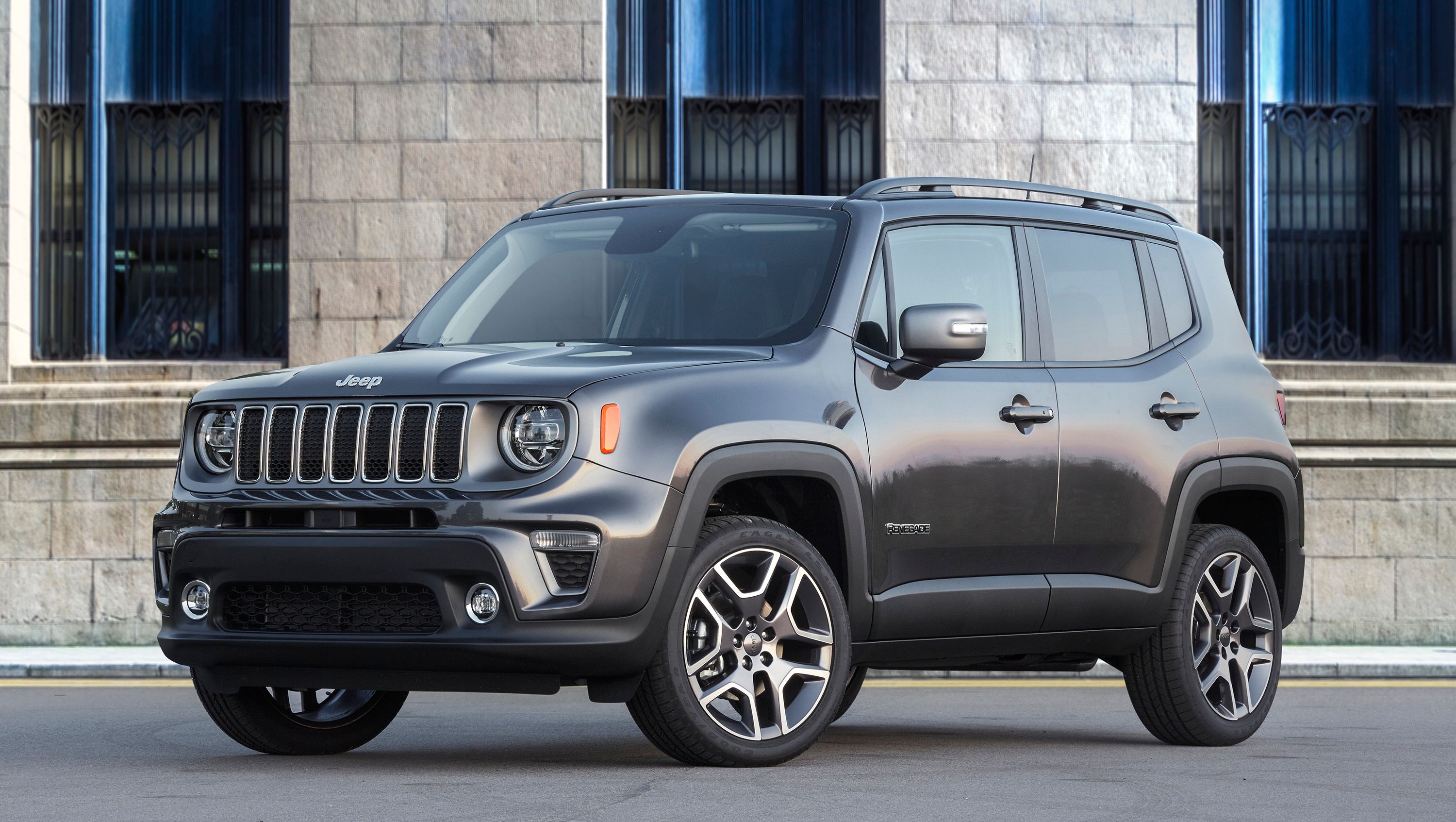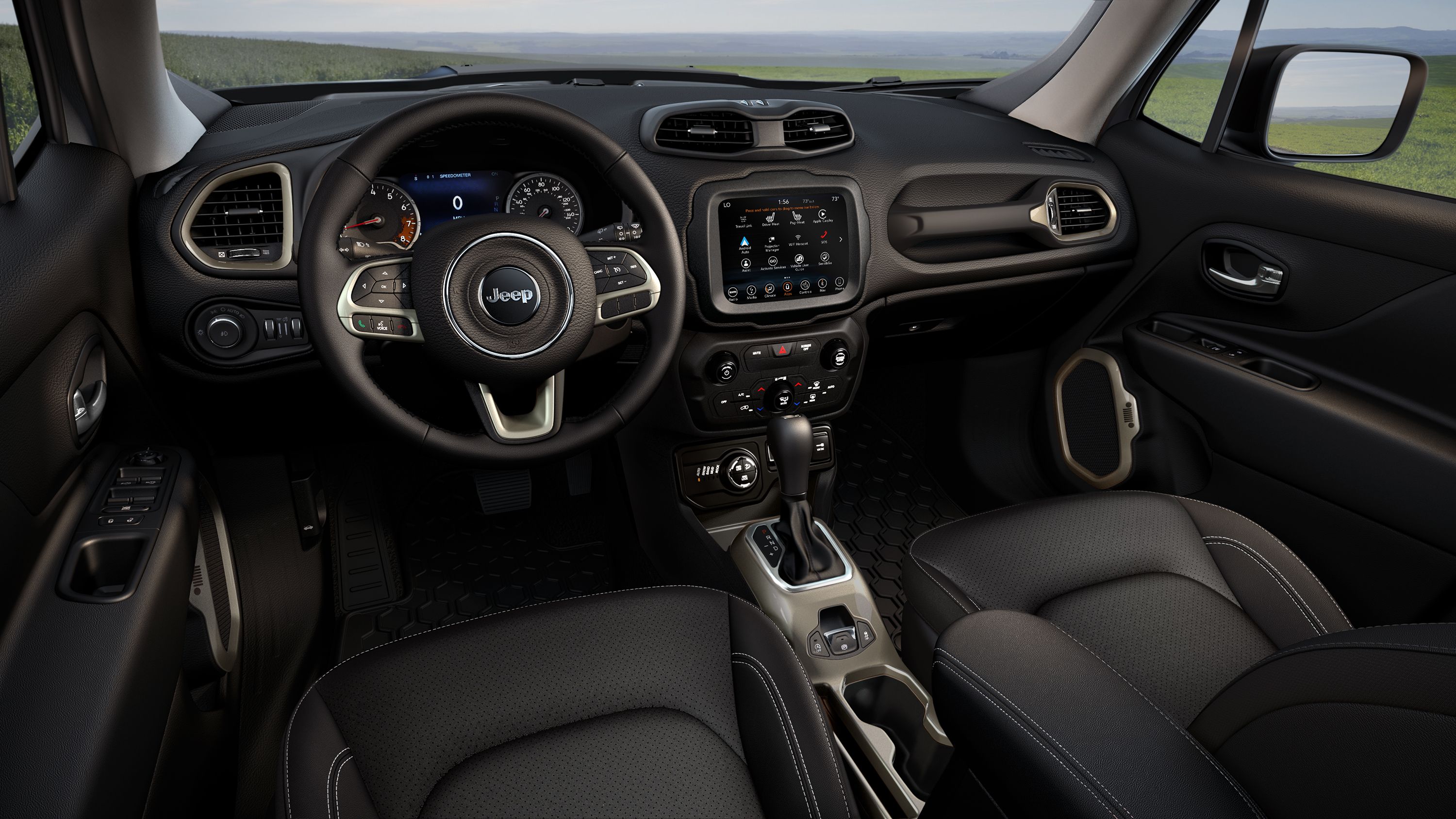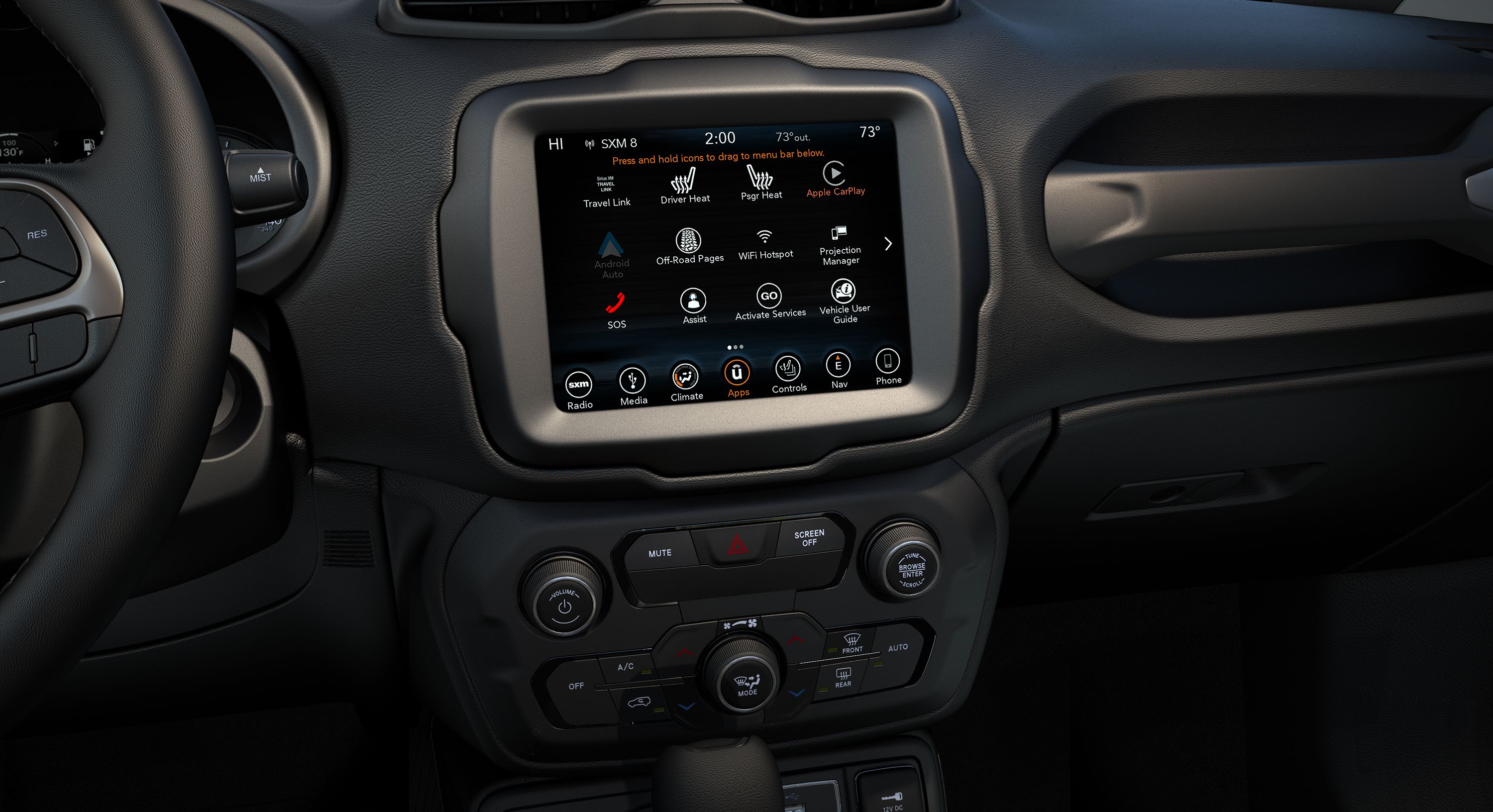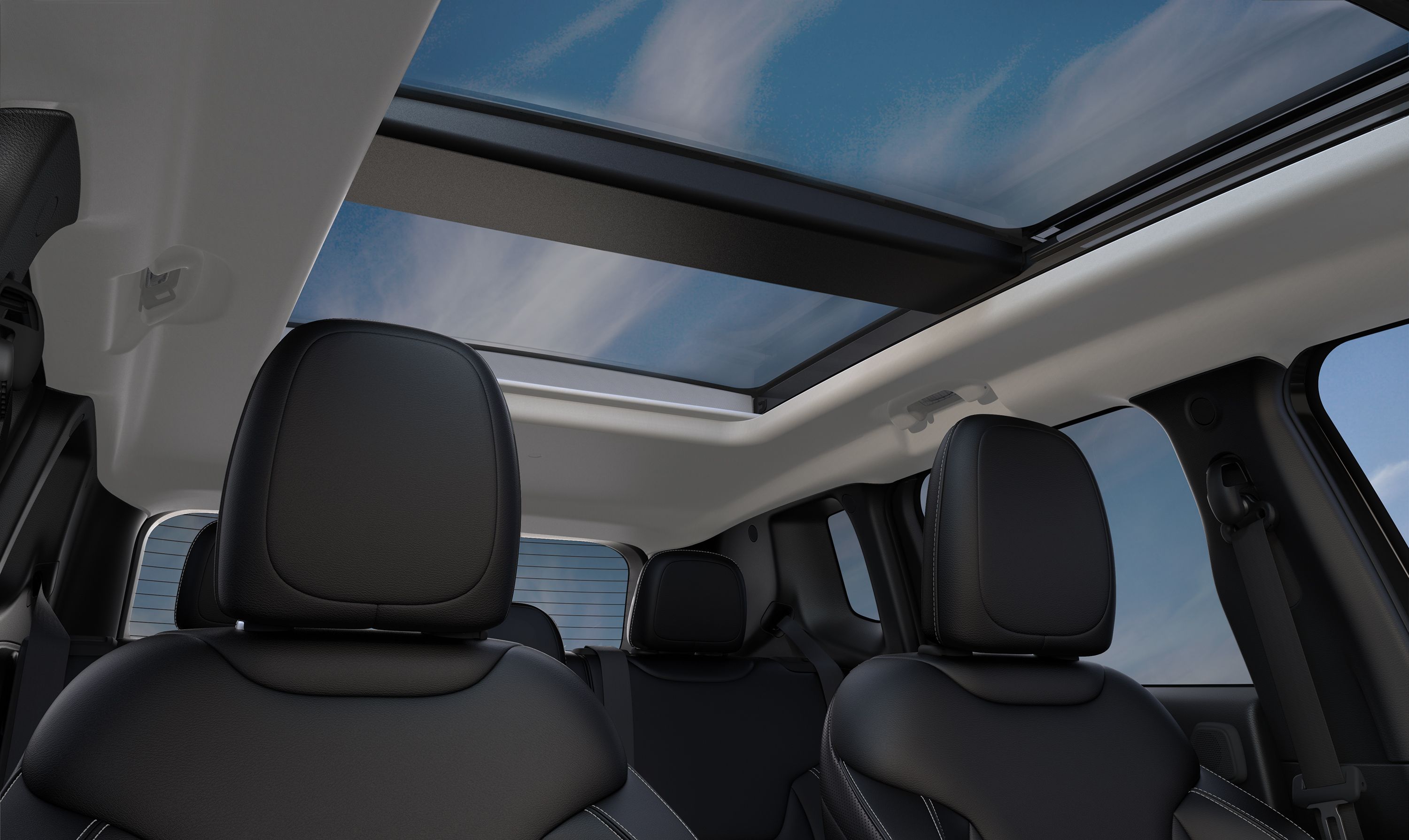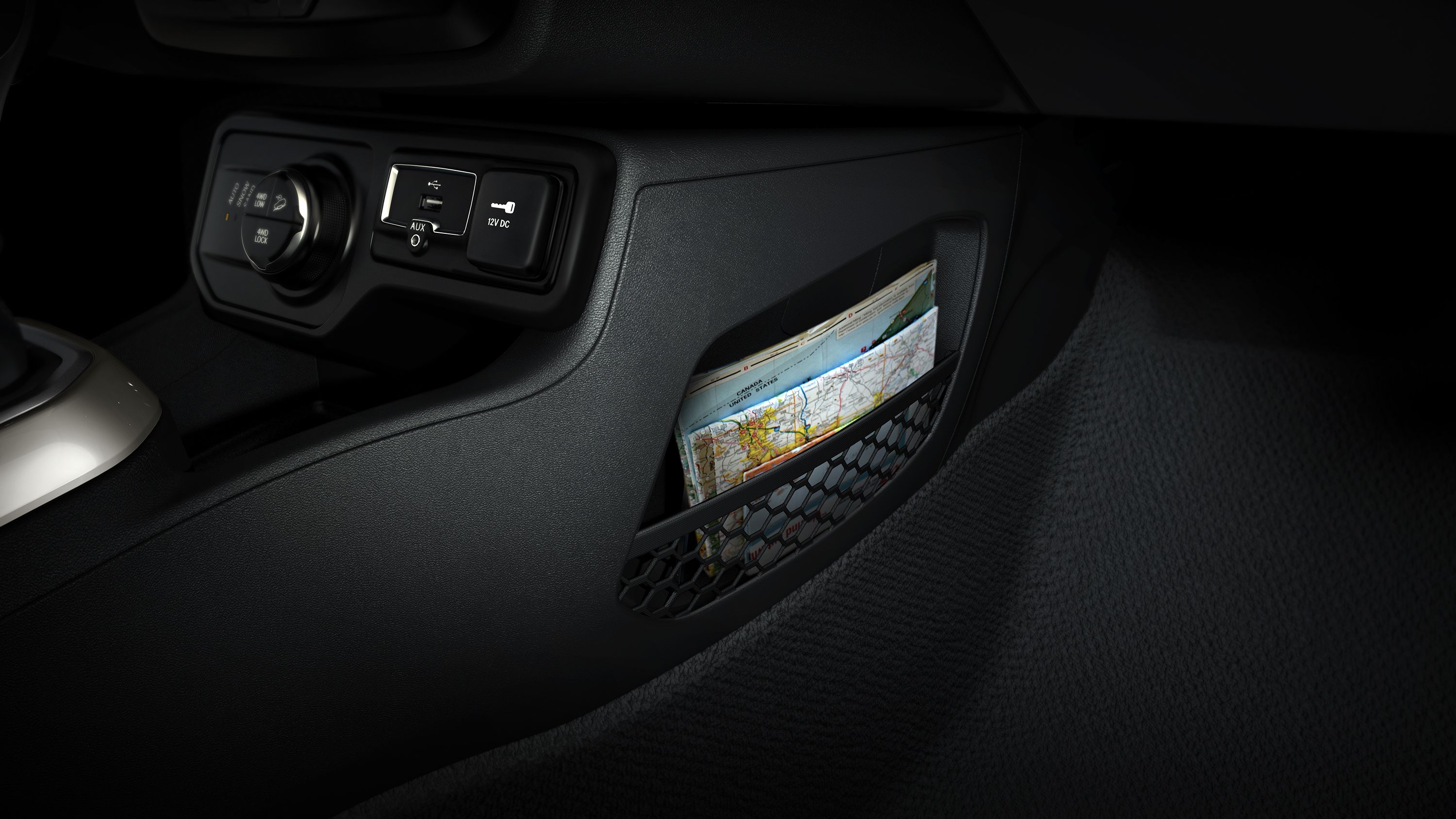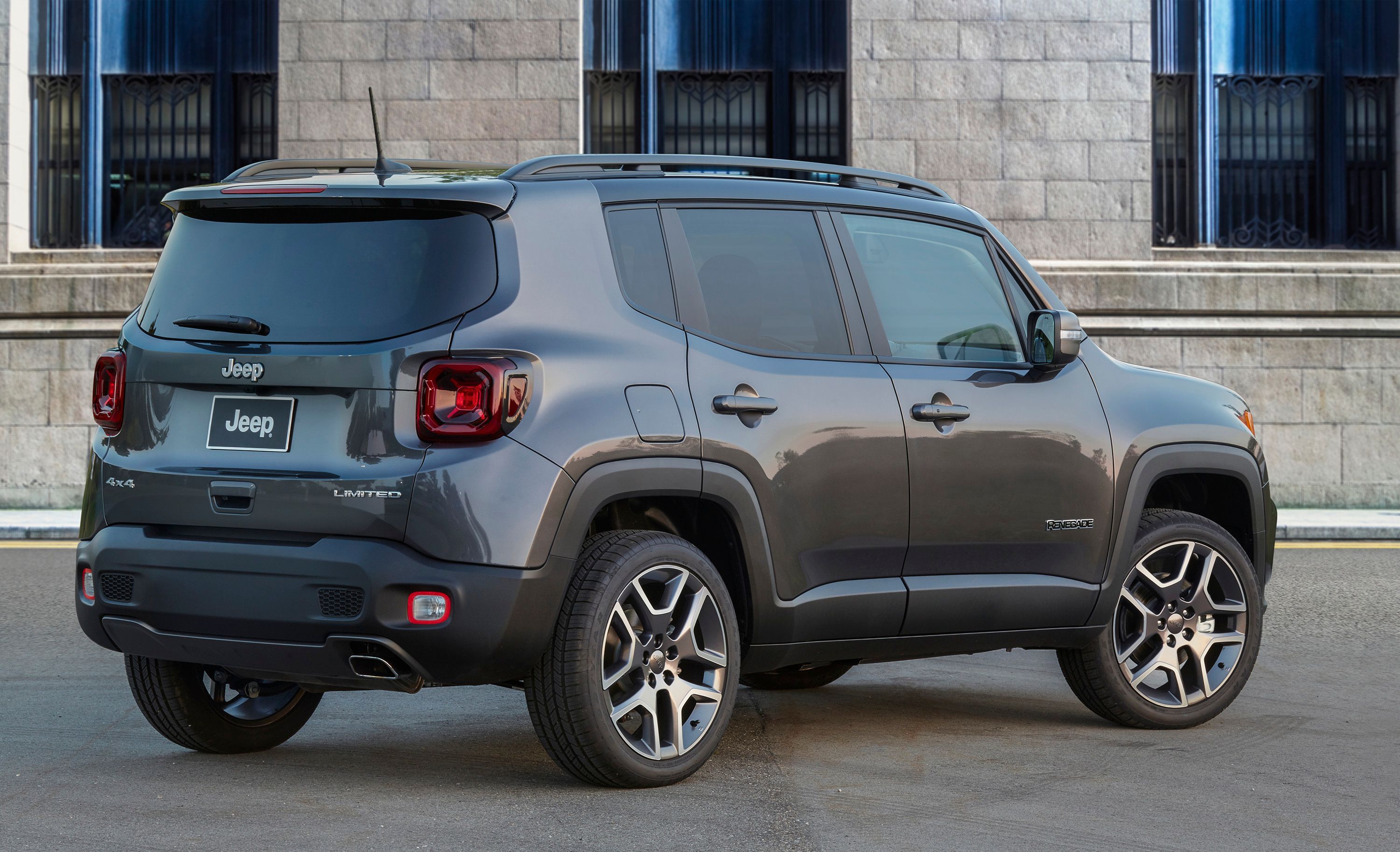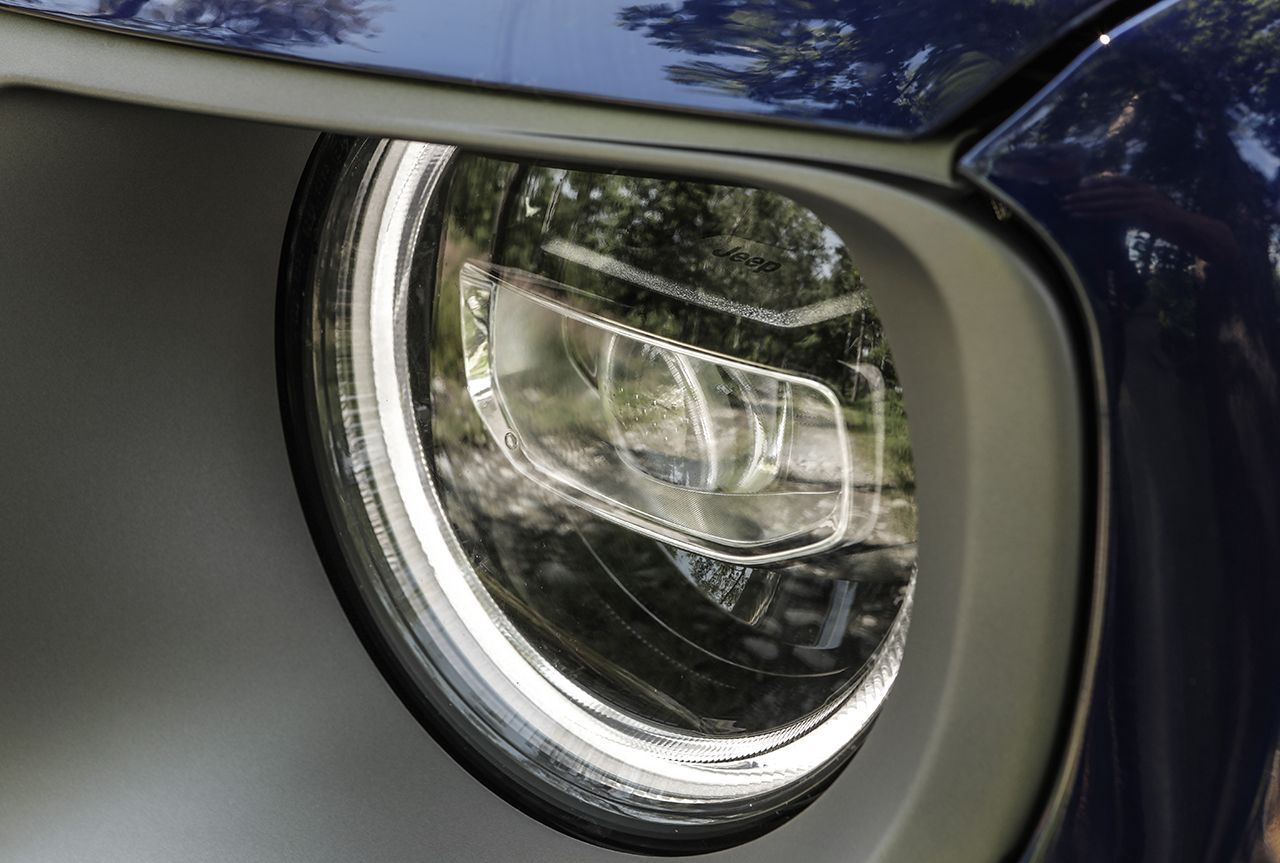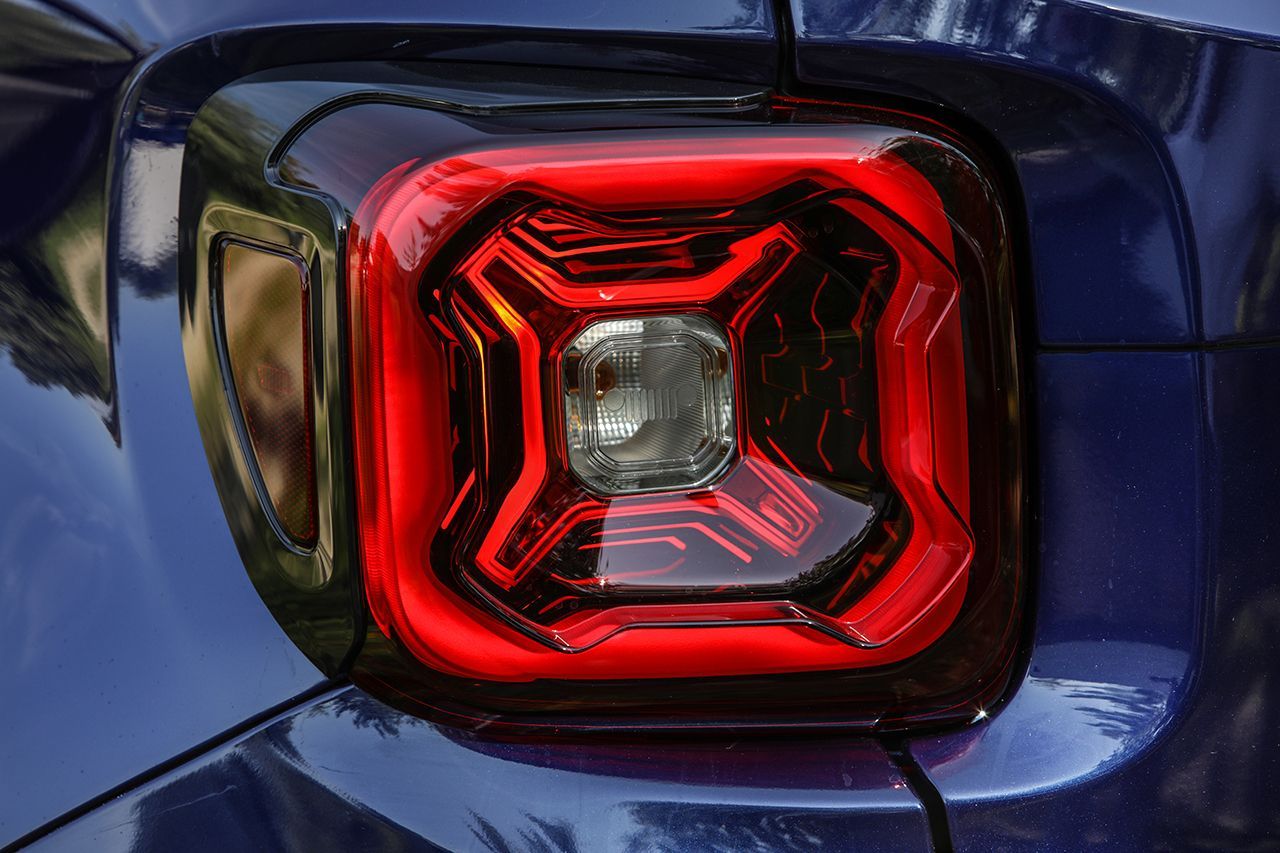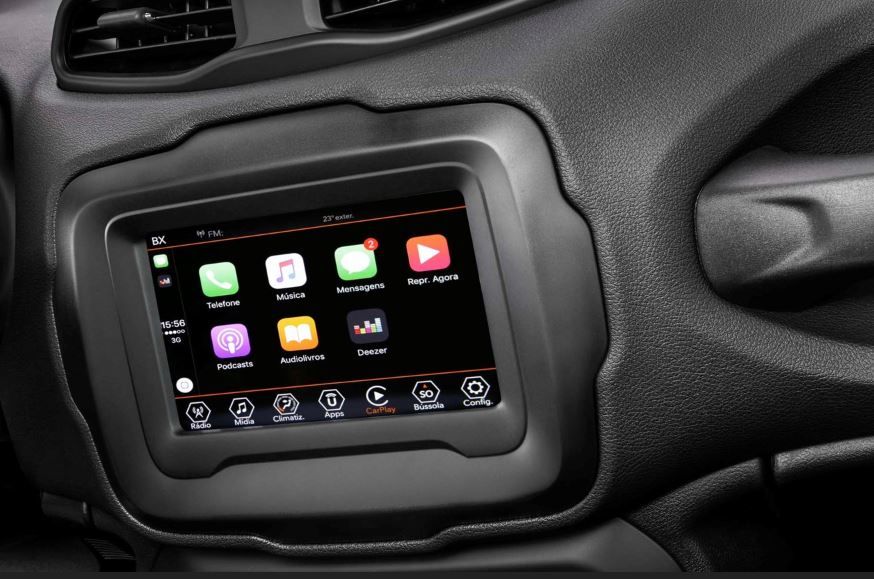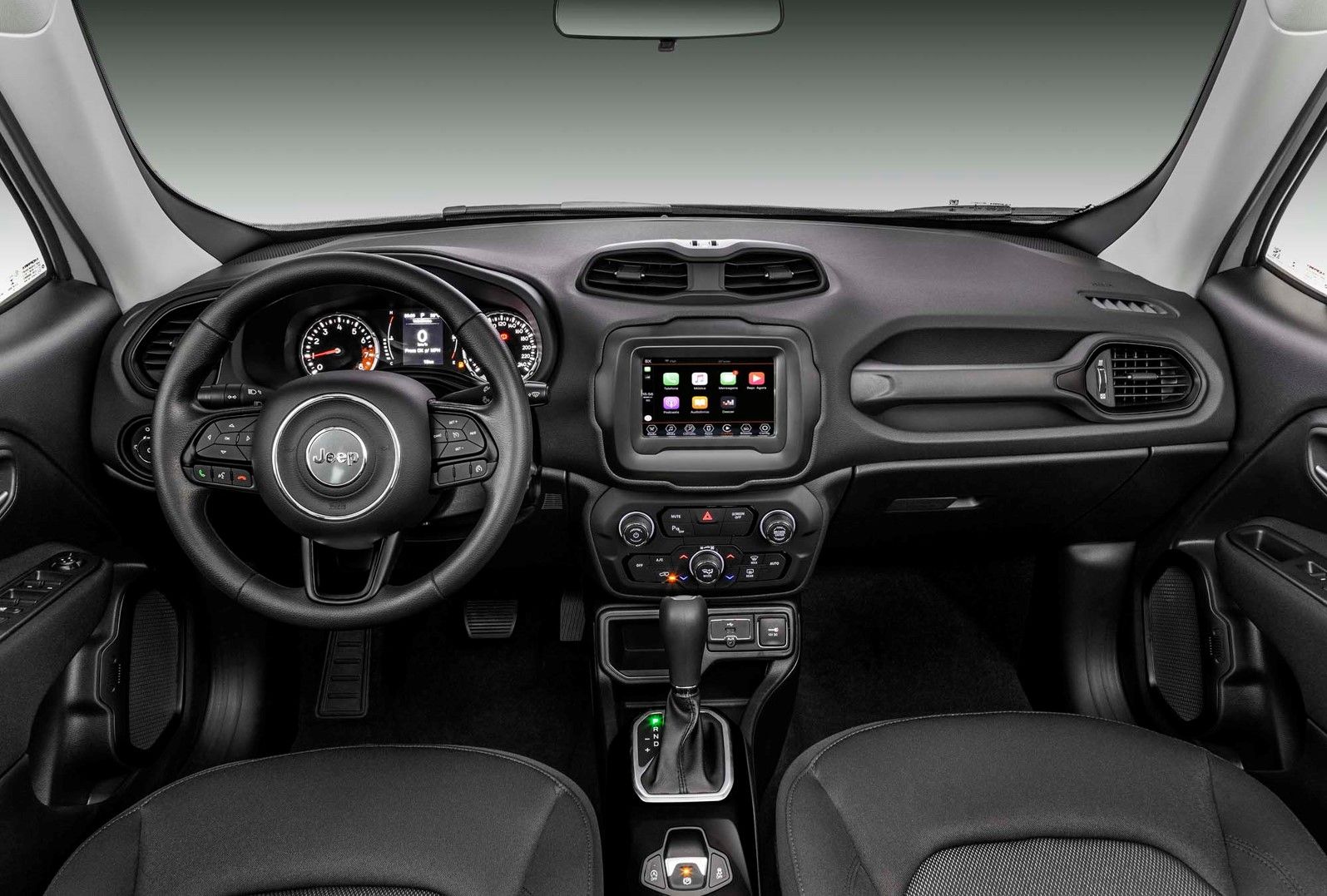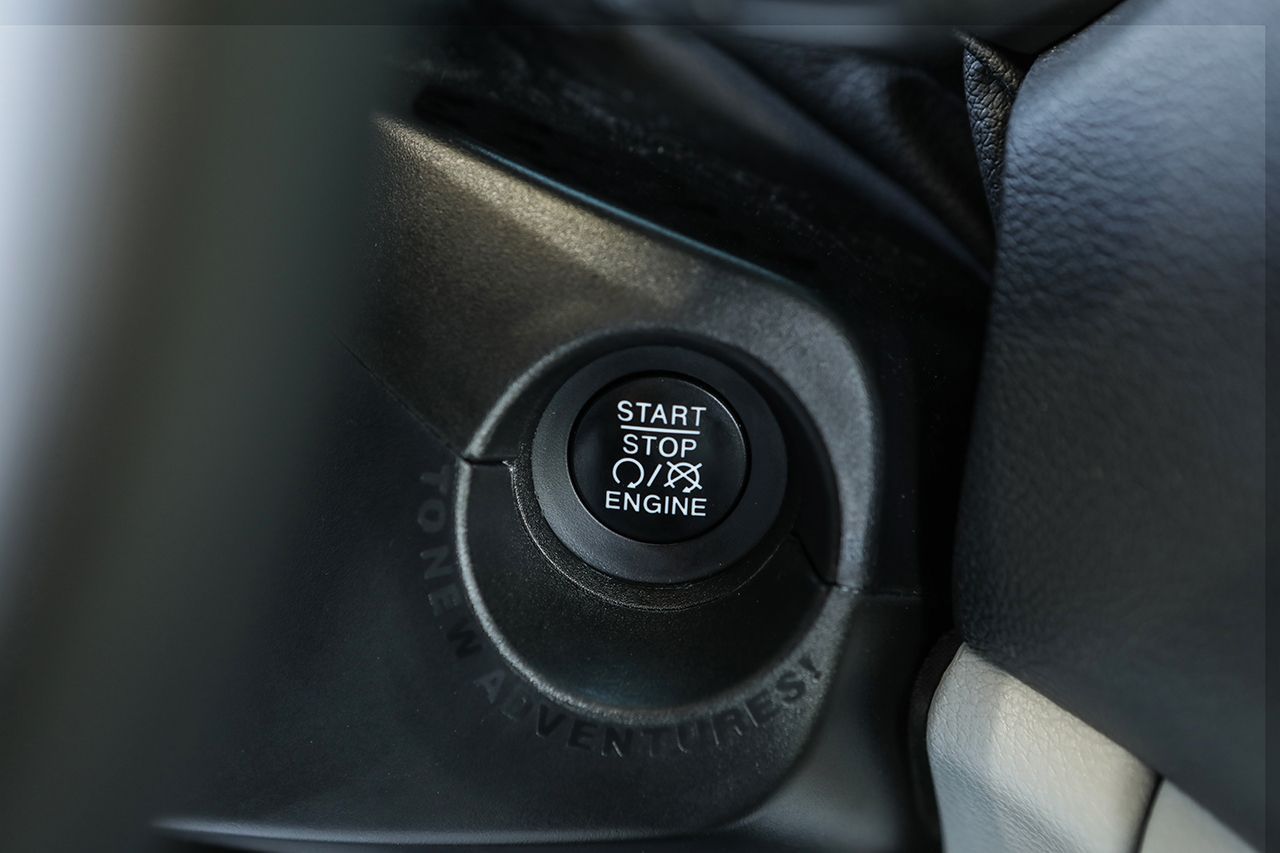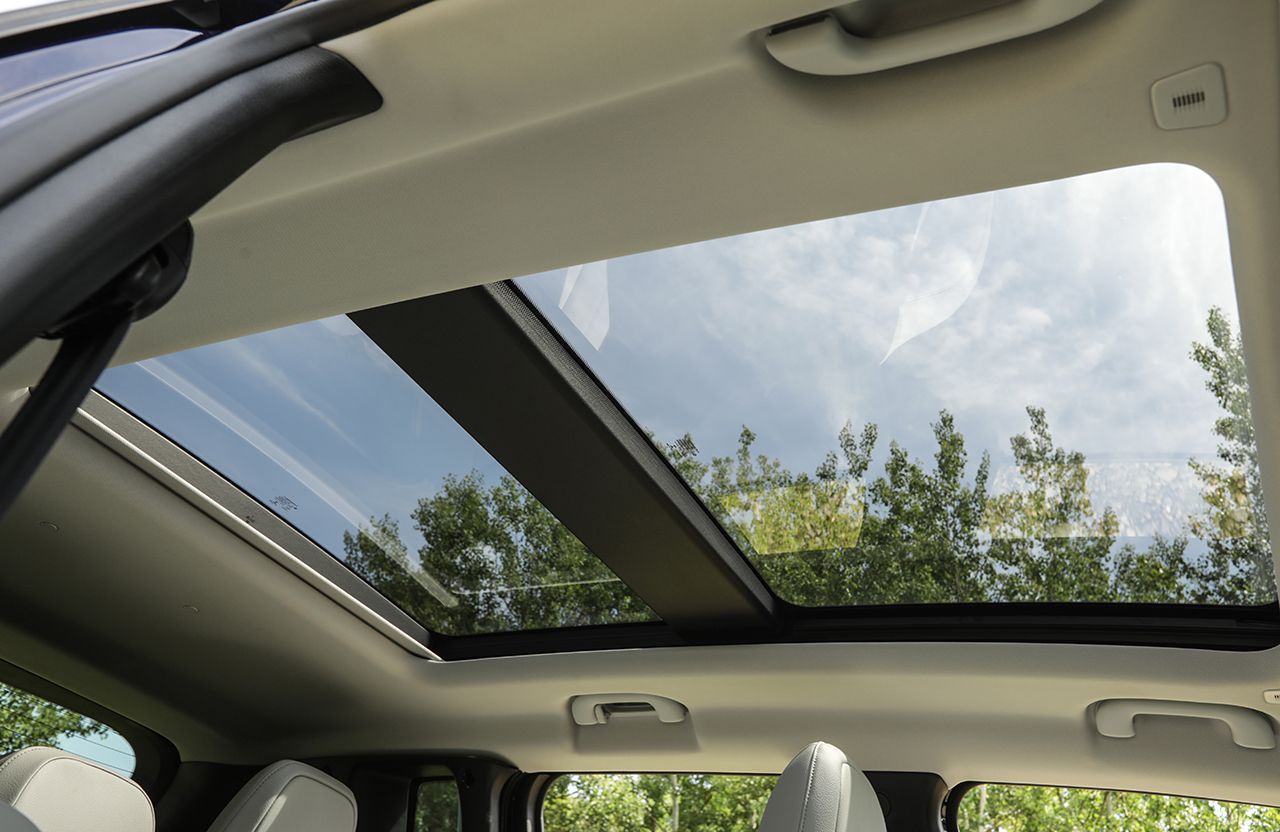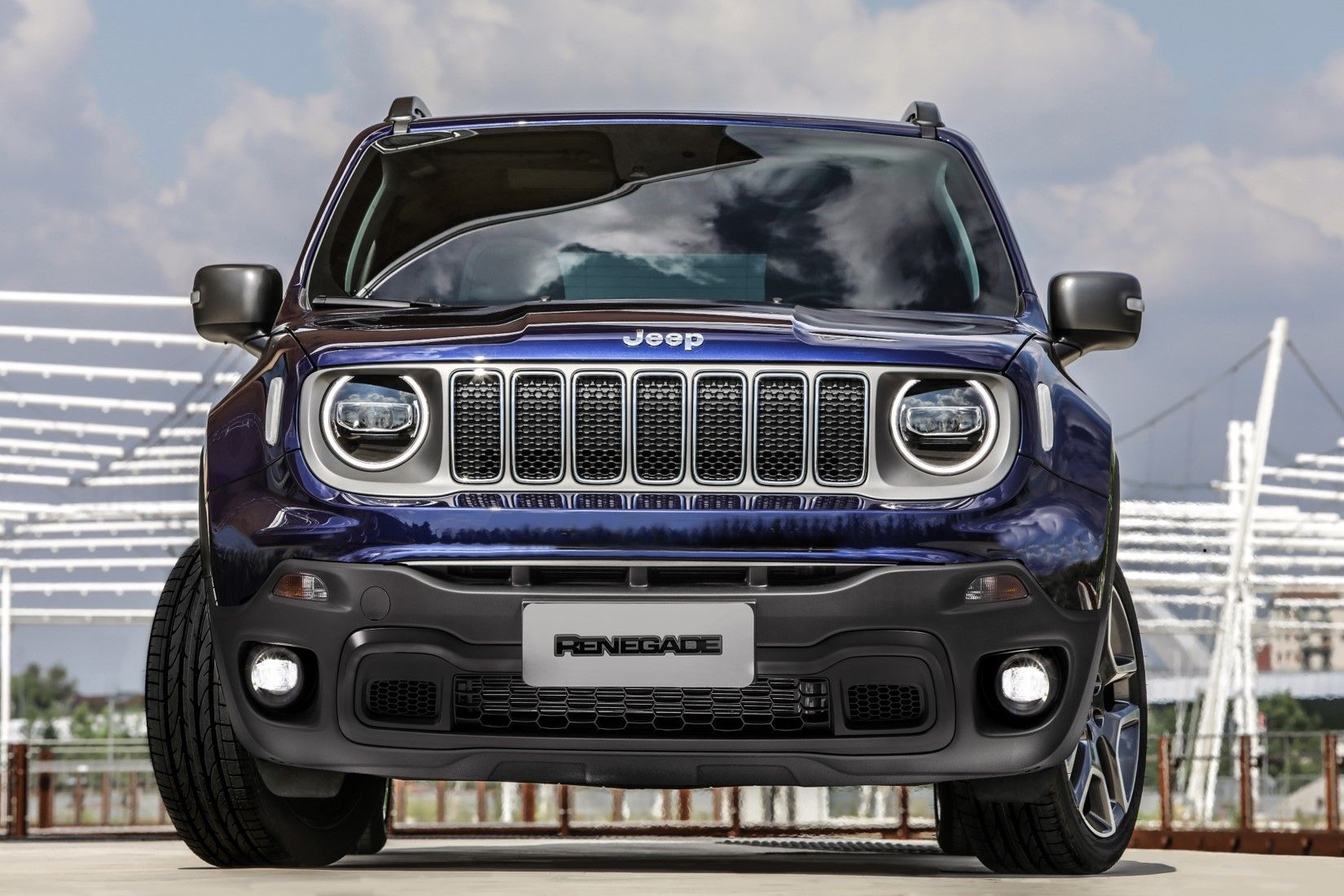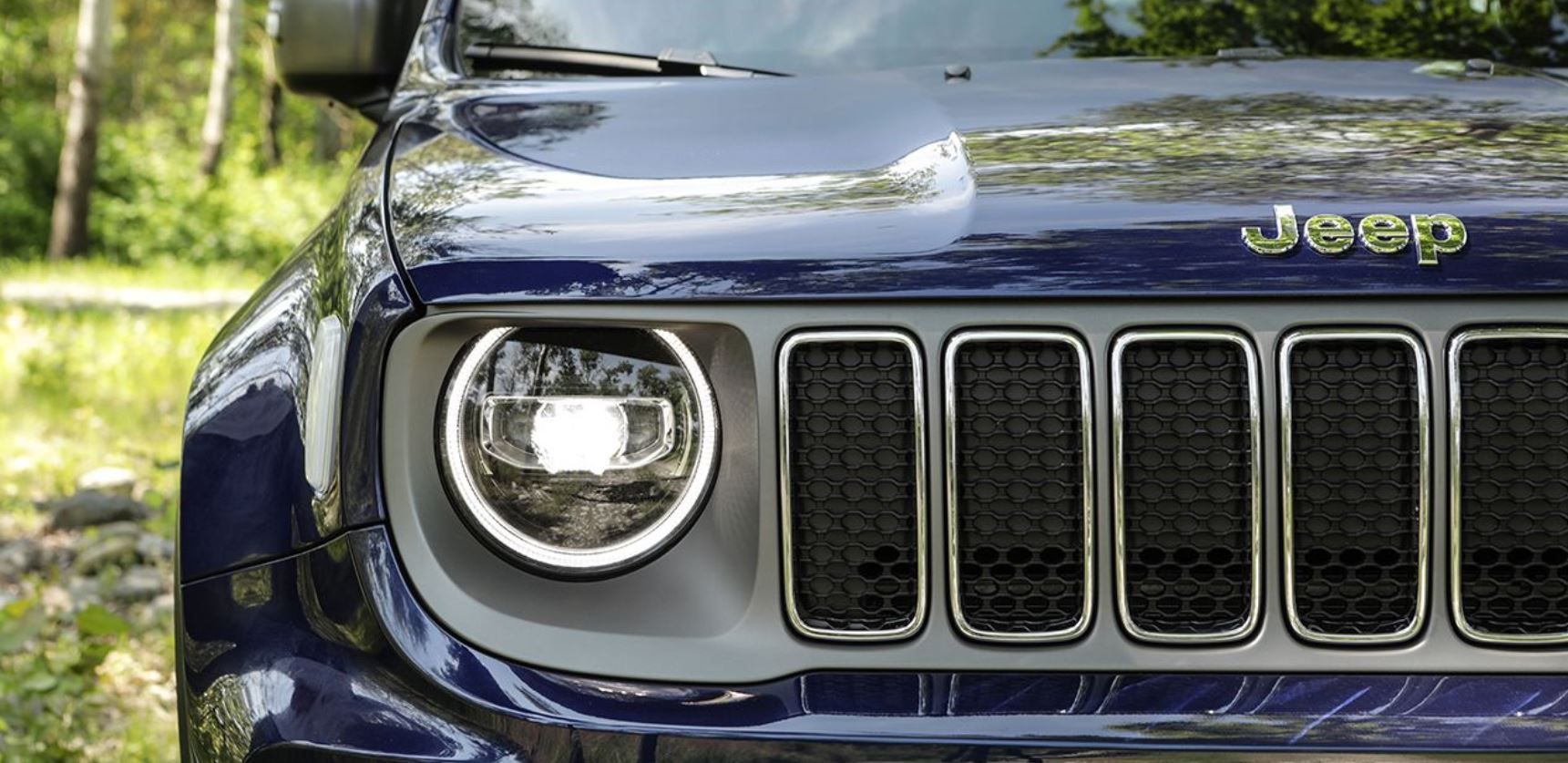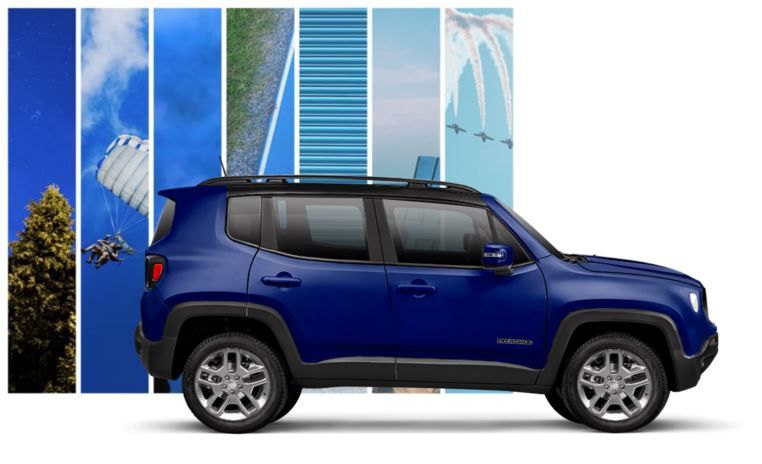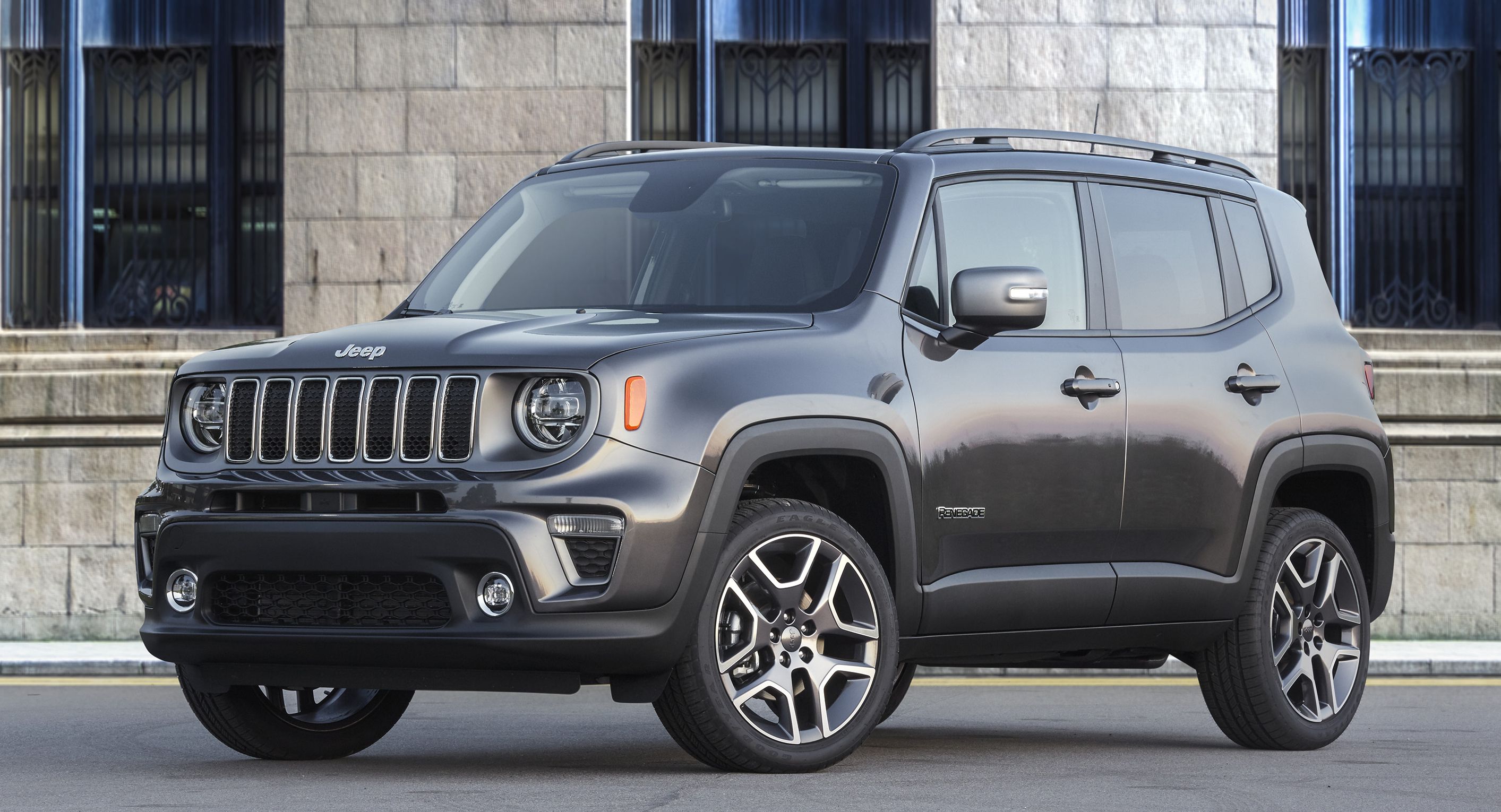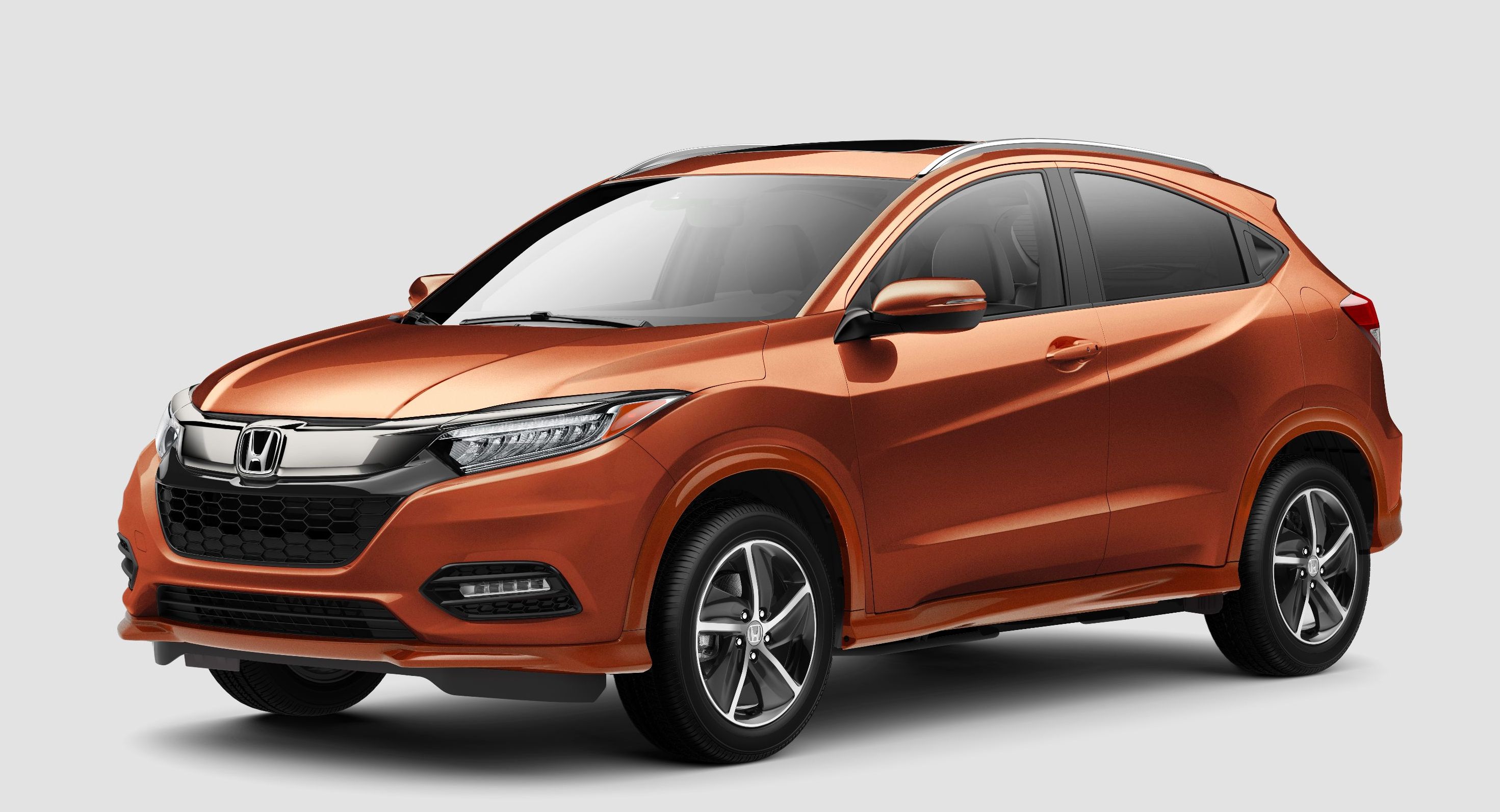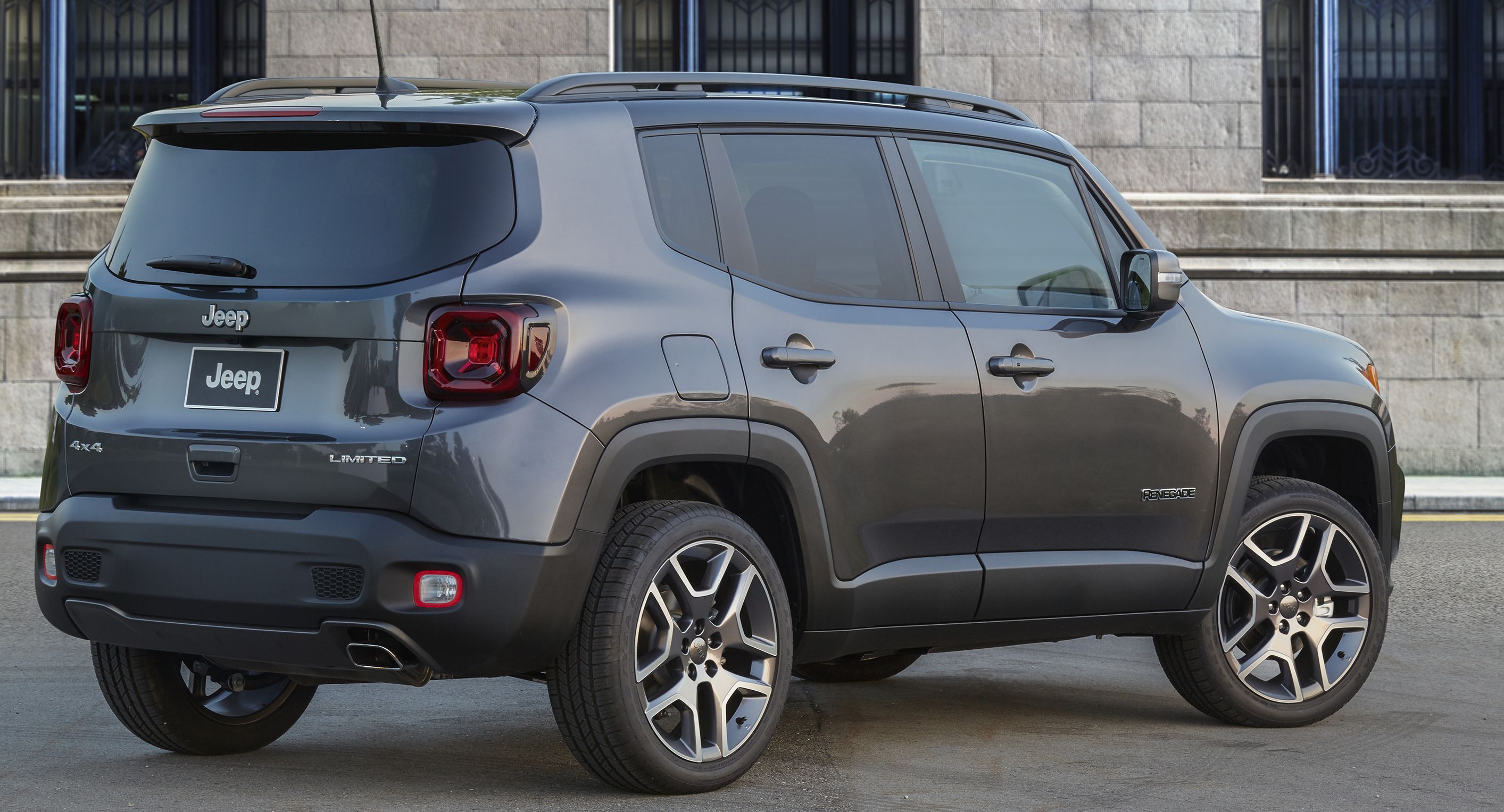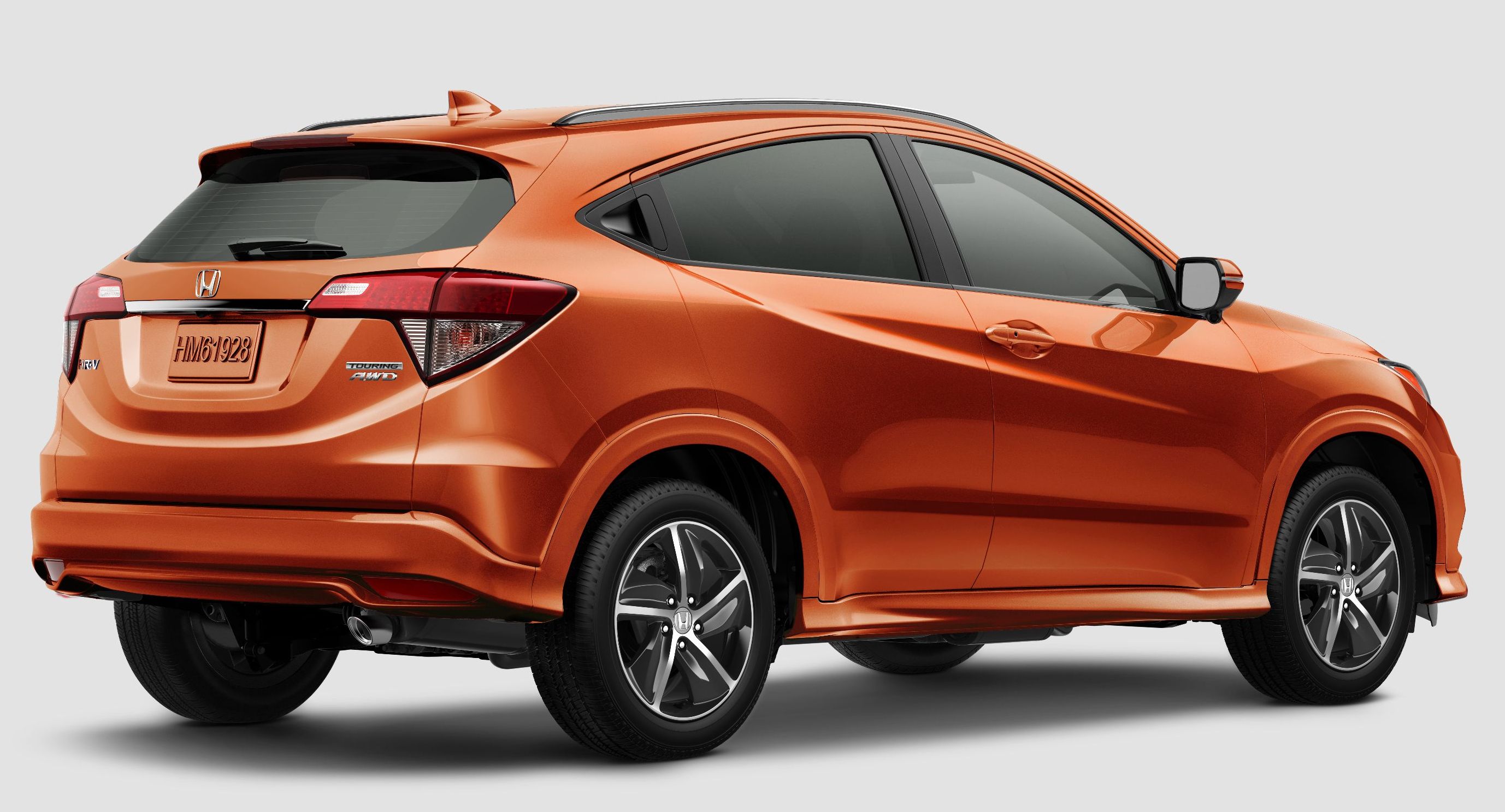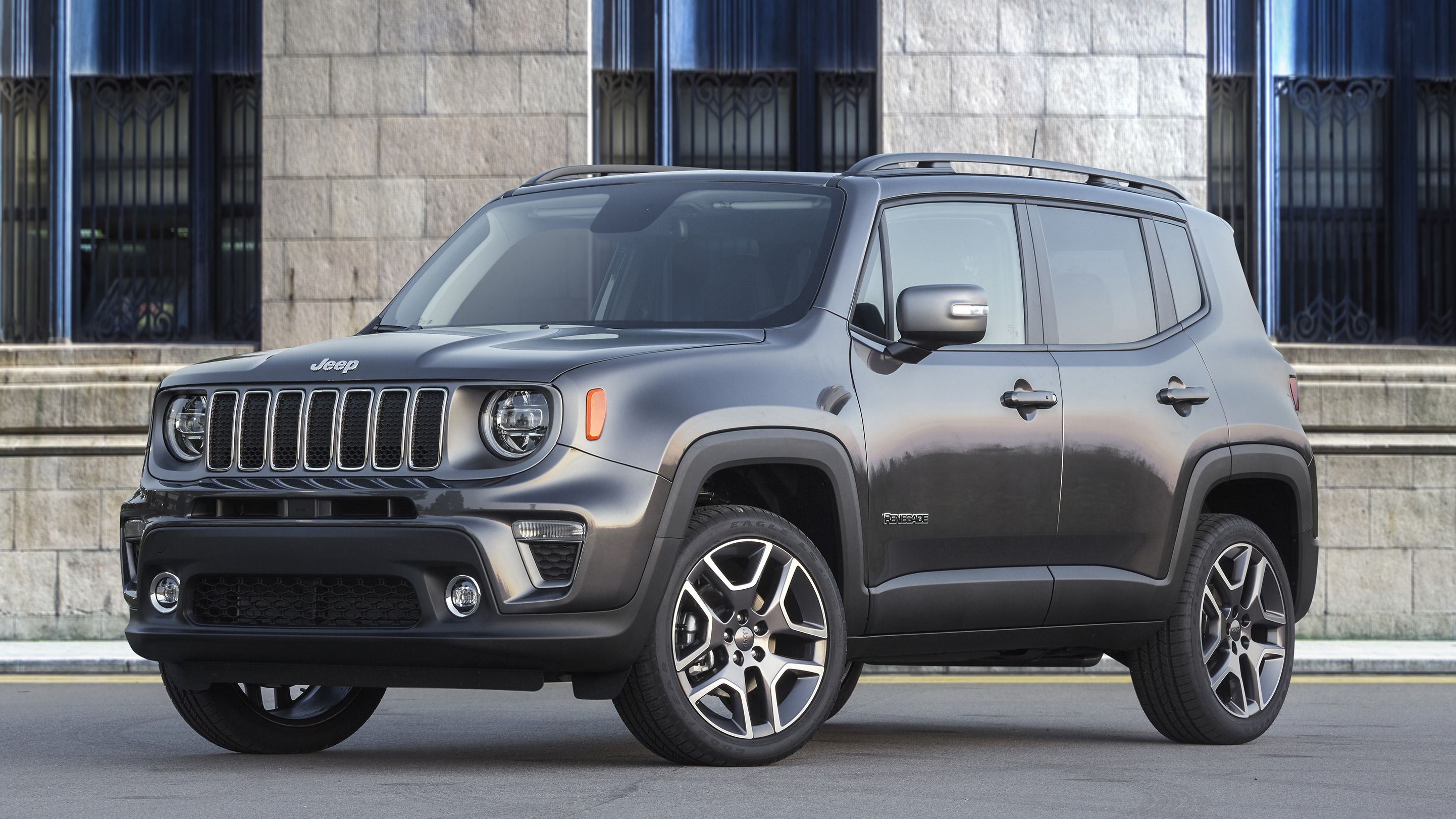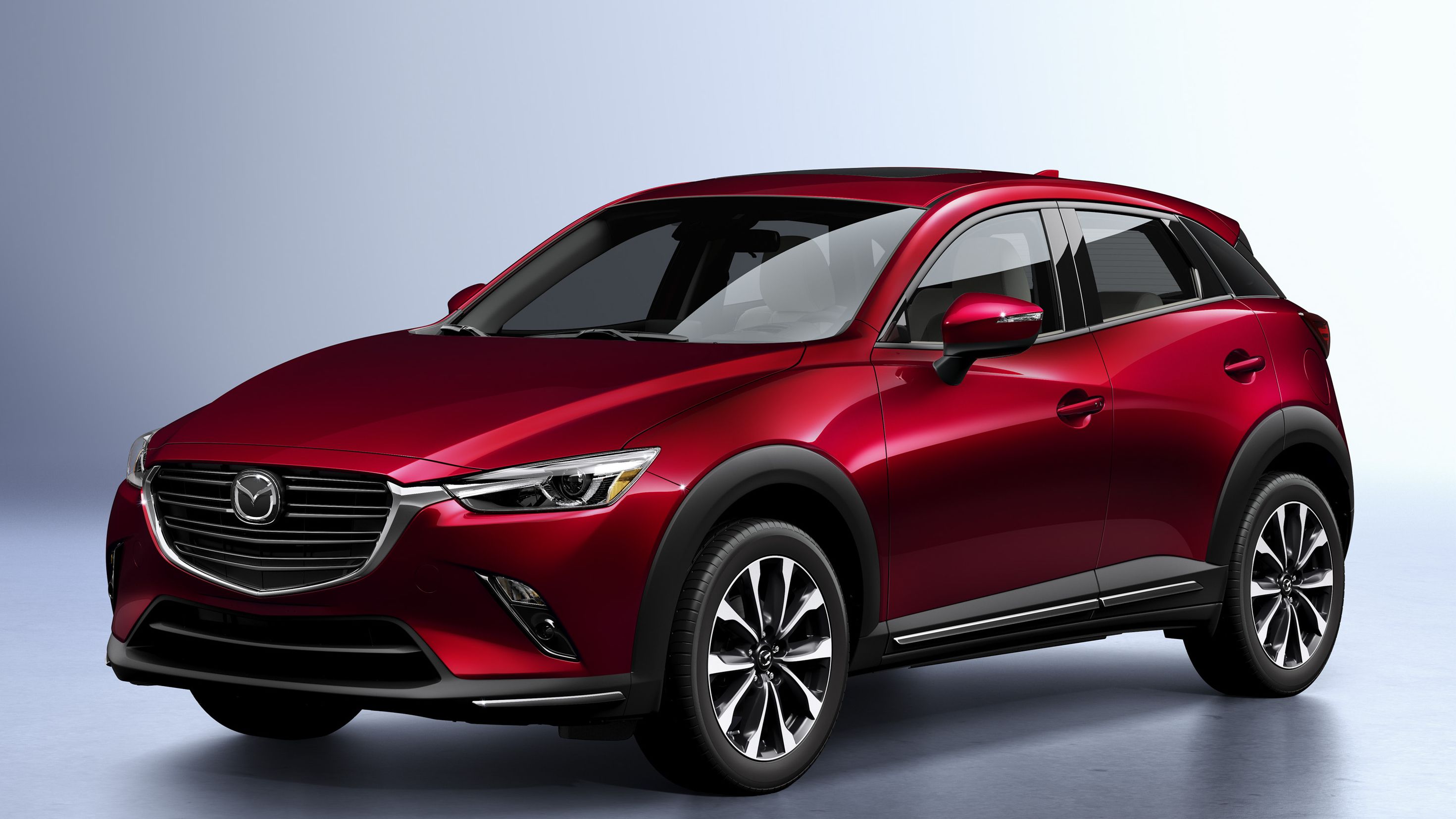The Jeep Renegade entered the market back in 2014 as a 2015 model and, despite the fact that it was expected to replace the Jeep Compass, the two models share a home in Jeep’s Lineup. The Renegade has changed a little bit with each model year, but the first official facelift didn’t happen until 2019 when a handful of subtle tweaks offered up a marginally fresh look. Curious to see how the updated Jeep Renegade compares to the launch model that we drove back in 2015, we asked FCA for a new loaner, and this is our thoughts after a week-long experience with the 2020 Jeep Renegade.
2020 Jeep Renegade - Driven
- Make: Array
- Model: 2020 Jeep Renegade - Driven
- Horsepower: 180
- Torque: 175
- [do not use] Vehicle Model: Array
Jeep Renegade Driving Experience and Impressions
At least some of this is remedied by the fact that the Renegade feels very confident when it comes to braking. We were able to appreciate the medium level of firmness from the pedal, and this in itself makes the Renegade daily as a daily driver. Add in the fact that steering is near perfect, with a nicely weighted wheel and decent feedback, and you can appreciate it even more.
Overall, the Renegade isn’t bad to drive, but you can definitely tell that it has aged since its introduction, and you can certainly feel the Fiat 500X DNA that runs through its veins.
Jeep Renegade Exterior Design – What’s New For 2020?
It’s the same story around back, where the rear fascia is now void of the weird mesh that made it stand out, and the red lower markers are now clear on some models. The taillights were also changed, not in shape or size, but the weird silver “X” was removed from the center, but the X still remains in the same color as the taillight lens. Despite this, the weird concave center still remains. At this point, it should be noted that the Renegade isn’t a thoroughbred Jeep. It’s produced exclusively in Italy next to the Fiat 500X. So, while it bears the Jeep name and Jeep Grille, it’s really just more of an upscale Fiat in Jeep clothing.
How Big is the Jeep Renegade?
The Jeep Renegade is a Subcompact SUV that measures 166.6 inches long, 74.2 inches wide, and 66.5 inches tall. It also sits eight inches off the ground with an approach angle of 21 degrees and a departure angle of 32.1 degrees.
For the sake of comparison, the Renegade fights on the market against the Honda HR-V and the Mazda CX-3. It’s actually the shortest of the three but is wider and taller than both. It’s also the heaviest at 3,210 pounds, at least 200 pounds higher than both the CX-3 and HR-V. Check out the full specs in our table below:
Jeep Renegade Exterior Dimensions Comparison
|
Jeep Renegade |
Honda HR-V |
Mazda CX-3 |
|
|---|---|---|---|
|
Length |
166.6 Inches |
170.4 Inches |
168.3 Inches |
|
Width |
74.2 Inches |
69.8 Inches |
69.6 Inches |
|
Height |
66.5 Inches |
63.2 Inches |
60.7 Inches |
|
Wheelbase |
101.2 Inches |
102.8 Inches |
101.2 Inches |
|
Ground Clearance |
8.0 Inches |
7.3 Inches |
6.1 Inches |
|
Angle of Approach |
21.0 Degres |
TBA |
TBA |
|
Angle of Departure |
32.1 Degrees |
TBA |
TBA |
|
Front Track |
60.6 Inches |
60.4 Inches |
60.0 Inches |
|
Rear Track |
60.6 Inches |
60.6 Inches |
59.9 Inches |
|
Curb Weight |
3210 LBS |
2959 LBS |
2952 LBS |
Available Exterior Colors
-* Alpine White Clear Coat
-* Bikini Clear Coat
-* Black Clear Coat
-* Colorado Red Clear Coat
-* Glacier Metallic Clear Coat
-* Granite Crystal Clear Coat
-* Jetset Blue Metallic Clear Coat
-* Omaha Orange Clear Coat
-* Slate Blue Pearl Coat
-* Sting Grey Clear Coat
Jeep Renegade Interior Design
As far as interior design goes, it’s hard to say if Jeep made any changes during the 2019 facelift. As best as we can tell, the interior is identical. It still features the same semi-digital instrument cluster with a small screen in the center and the unless you opt for the Uconnect 8.4-in Nav group, in which case you’ll get a seven-inch TFT LCD display cluster. As for the infotainment system, the seven-inch display is standard, but the 8.4-inch display comes standard on higher trim levels. As long as you opt for a Uconnect 4 system, you’ll have Android Auto and Apple CarPlay connectivity. Voice command with Bluetooth and the media hub are standard across all trims. There are a handful of interior colors that include the following:
-* Black Sandstorm with Metal Diamond accents
-* Trespass Black with Metal Diamond accents
-* Black leather with Grillz accents
-* Polar Plunge with Metal Diamond accents
-* Polar Plunge leather with Grillz accents
-* Trailhawk Black with Ruby Red accents
Of course, not all colors are available on the lower trim levels, so if you’re looking for a specific color combination, don’t be surprised if you have to move up-trim.
How Much Passenger Room Does the Jeep Renegade Have?
The Jeep Renegade is a subcompact SUV, so don’t fool yourself into thinking that it’s overly spacious. It’s not bad for its size, though, and it beats out both the HR-V and CX-3 in terms of front and rear headroom, and there’s more rear passenger space in the Renegade, with the exception of legroom where the Honda beats it out by some four inches. Basically, if you’re a tall person, you probably want to avoid the rear seat. Here’s a full list of interior specs for the Renegade and the competition.
Jeep Renegade Interior Dimensions Comparison
|
Jeep Renegade |
Honda HR-V |
Mazda CX-3 |
|
|---|---|---|---|
|
Front Headroom |
41.1 Inches |
37.6 Inches |
38.4 Inches |
|
Front Shoulder Room |
55.9 Inches |
56.8 Inches |
53.5 Inches |
|
Front Hip Room |
53.1 Inches |
53.1 Inches |
52.3 Inches |
|
Front Leg Room |
41.2 Inches |
41.2 Inches |
41.7 Inhes |
|
Rear Head Room |
40.5 Inches |
38.3 Inches |
37.2 Inches |
|
Rear Shoulder Room |
55.1 Inches |
54.5 Inches |
50.4 Inches |
|
Rear Hip Room |
51.9 Inches |
47.4 Inches |
49.0 Inches |
|
Rear Leg Room |
35.1 Inches |
39.3 Inches |
35.0 Inches |
How Much Cargo Room Does the Jeep Renegade Have?
When it comes to cargo room, the Renegade is a bit of a mixed bag and falls right between the Honda HR-V and Mazda CX-3 with a minimum capacity of 18.5 cubic-feet or a maximum of 50.8 cubic-feet. In comparison, the HR-V offers a minimum of 24.3 cubic-feet and a maximum of 58.8 cubic-feet while the Mazda CX-3 is good for just 12.4 cubic-feet or 44.5 cubic-feet with the rear seats folded down.
Jeep Renegade Cargo Room Comparison
|
Minimum Cargo Capacity |
18.5 CU-FT |
24.3 CU-FT |
12.4 CU-FT |
|---|---|---|---|
|
Maximum Cargo Capacity |
50.8 CU-FT |
58.8 CU-FT |
44.5 CU-FT |
Jeep Renegade Infotainment and Technology
Apple CarPlay and Android Auto work as you’d expect, but you’ll have to pay up for the optional Advanced Technology Group if you want the important driver and safety aids, including:
-* Full-speed Forward Collision Warning with Active Braking
-* LaneSense Lane Departure Warning with Lane Keep Assist
-* ParkSense rear park assist system
-* Auto high-beam headlamp control (requires Safety & Security Group)
Jeep Renegade Powertrain, Capability, and Performance
How Much Can the Jeep Renegade Tow?
The Jeep Renegade can tow a maximum of 2,000 pounds when equipped with 4WD, a 2.4-liter engine, full-size spare tire, and the Trailer-Tow Group Option. The Trailer-tow Group includes a Class III hitch receiver and four-pin wiring harness. Trailer-sway control, oddly enough, is standard on all models, but the Trailer-tow Group isn’t available on the entry-level Sport trim. For comparison purposes, the Honda HR-V can tow 1,500 pounds under similar conditions while the CX-3 matches the Renegade at 2,000 pounds maximum capacity.
Is the Jeep Renegade Capable of Off-Roading
In theory, the Renegade is capable of doing some light off-roading, but make no mistake, this isn’t a Jeep Wrangler. It has an approach angle of 21 degrees and a departure angle of 32.1 degrees with a total ground clearance of eight inches, so it can traverse some mild terrain, but you’re also limited to the nine-speed automatic transmission. The Renegade is basically a badge-engineered Fiat 500X, so it’s not necessarily designed for hardcore off-roading as other models from the brand are. On that note, it is one of the few subcompact SUVs with four-wheel independent suspension, so it’s more capable for off-roading than models like the Honda HR-V and Mazda CX-3.
How Fast is the Jeep Renegade
The Jeep Renegade can run the 60-mph sprint in as little as 8.7 seconds and tops out at 122 mph. In comparison, the Honda HR-V offers up a 9.6-second sprint to 60 mph and a top speed of 125 mph. The Mazda CX-3 is quicker to 60 mph at 8.4 seconds on a good day, but it falls short in top speed at 114 mph.
How Much Does the Jeep Renegade Cost?
The Jeep Renegade is offered in 8 different trim levels, with pricing ranging from $22,470 for the entry-level Sport model up to $28,835 for the range-topping High Altitude trim level. A full breakdown of pricing can be seen in the chart below.
Jeep Renegade Pricing (MSRP)
|
MSRP |
|
|---|---|
|
Jeep Renegade Sport |
$22,470 |
|
Jeep Renegade Upland |
$25,070 |
|
Jeep Renegade Latitude |
$24,125 |
|
Jeep Renegade Altitude |
$25,315 |
|
Jeep Renegade North Edition |
$26,670 |
|
Jeep Renegade Limited |
$26,840 |
|
Jeep Renegade Trailhawk |
$27,990 |
|
Jeep Renegade High Altitude |
$28,835 |
How Does the Jeep Renegade Compare to the Honda HR-V?
|
|
ids=894272,894273 |
no_overlay=false |
before_label=Jeep Renegade |
after_label=Honda HR-V> |
The Honda HR-V is another main competitor in the subcompact crossover market, and you’ll find that it features a more attractive, less-boxy design that makes it sleeker and sportier than the Renegade. One could also argue that it’s the sportiest crossover in Honda’s lineup thanks to the gently sloping roof that nothing else in Honda’s SUV and Crossover lineup has. The interior of the HR-V feels more modern than that of the Renegade, which is strange considering the second-gen model was introduced around the same time. The infotainment system resides in the center stack and is wider than it is tall, while functionality and ease of use make it one of the best on the market. You get all the standard features, including Apple CarPlay and Android Auto, Bluetooth connectivity, etc.
|
|
ids=894274,894275 |
no_overlay=false |
before_label=Jeep Renegade |
after_label=Honda HR-V> |
Where the HR-V doesn’t excel, however, is in the power department where the standard 1.8-liter four-cylinder delivers just 141 horsepower and 127 pound-feet of torque. That makes it nearly 40 ponies and 50 pound-feet below the Renegade. It also falls short of the CX-3 by seven horsepower and 18 pound-feet. It can be had in FWD or AWD configurations and can hit 60 mph in 9.6 seconds on the way to a top speed of 125 mph. Towing capability comes in at just 1,500 pounds, which isn’t bad for its size, but below the Renegade, but fuel economy is impressive at 26 mpg in the city, 31 mpg on the highway, and 28 mpg combined – figures that blow the Renegade out of the water in the long-term. The HR-V starts out at $20,820 and climbs to as high as $28,890 in range-topping Touring trim.
Jeep Renegade vs. Honda HR-V
|
Jeep Renegade |
Honda HR-V |
|
|---|---|---|
|
Engine |
2.4-Liter Four-Cylinder |
1.8-Liter Four-Cylinder |
|
Transmission |
9AT |
CVT |
|
Horsepower |
180 HP |
141 HP |
|
Torque |
175 LB-FT |
127 LB-FT |
|
Driveline |
FWD\AWD |
FWD\AWD |
|
Fuel |
Regular |
Regular |
|
Fuel Economy |
21/29/24 |
26/31/28 |
|
Suspension |
Four-Wheel Independent |
Front Independent |
|
Turning Circle |
36.3 Feet |
37.4 Feet |
|
Front Tire Size |
215/60R17 |
215/55R17 |
|
Rear Tire Size |
215/60R17 |
215/55R17 |
|
Max Towing Capacity |
2000 LBS |
1500 LBS |
Read our full review on the 2020 Honda HR-V.
How Does the Jeep Renegade Compare to the Mazda CX-3
|
|
ids=894276,894277 |
no_overlay=false |
before_label=Jeep Renegade |
after_label=Mazda CX-3> |
In terms of general shape, the Mazda CX-3 is a lot like that Honda HR-V – it has a sporty character inside and out, stylish design, and that gently sloped roof that is all the rave these days. The interior can best be described as somewhat minimalistic with a simple display perched on top of the dash, and a center console that isn’t too crowded. There’s actually a lot of open dash space, too, and that helps to give the impression of space – something that comes at a premium in the subcompact crossover\SUV segment.
Under the hood sits a 2.0-liter four-cylinder that’s good for 148 horsepower and 145 pound-feet of torque. That make sit under-powered in comparison to the Renegade, but it’s still capable of towing up to 2,000 pounds and manages to pull the best fuel economy of the group at 27 mpg in the city, 32 mpg on the highway, and 29 mpg combined. It also beats the Renegade and HR-V to 60 mph by getting there in 8.4 seconds, but top speed falls short at 114 mph. Pricing for the CX-3 starts out at $20,390 for the entry-level Sport trim and climbs to as much as $25,745 for the range-topping Grand Touring trim.
Jeep Renedage vs. Mazda CX-3
|
Jeep Renegade |
Mazda CX-3 |
|
|---|---|---|
|
Engine |
2.4-Liter Four-Cylinder |
2.0-Liter Four-Cylinder |
|
Transmission |
9AT |
6AT |
|
Horsepower |
180 HP |
148 HP |
|
Torque |
175 LB-FT |
145 LB-FT |
|
Driveline |
FWD\AWD |
FWD\AWD |
|
Fuel |
Regular |
Regular |
|
Fuel Economy |
21/29/24 |
27/32/29 |
|
Suspension |
Four-Wheel Independent |
Front Independent |
|
Turning Circle |
36.3 Feet |
34.8 Feet |
|
Front Tire Size |
215/60R17 |
215/60R16 |
|
Rear Tire Size |
215/60R17 |
215/60R16 |
|
Max Towing Capacity |
2000 LBS |
2000 LBS |
Read our full review on the 2020 Mazda CX-3.

